Continuing the ongoing series of interviews with creative artists working on various aspects of movie and TV productions, it is my pleasure to welcome Neil Patel. In this interview he talks about his work in theater, film and episodic television, evolution of tools at his disposal, changes in the world of episodic productions in the recent years with the rise of streaming services, and the impact felt all across the industry since Covid started. Around these topics and more, Neil dives deep into his work on the second season of “Dickinson”.
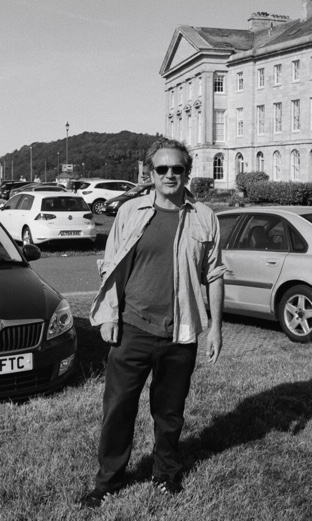 Kirill: Please tell us about yourself and the path that took you to where you are today.
Kirill: Please tell us about yourself and the path that took you to where you are today.
Neil: My name is Neil Patel, and I’m a production designer. I’m currently working on season 3 of “Dickinson”, and I also did season 2 which has just been released.
My path to this job started when I was in school. I was interested in art and architecture, and I loved film – but I never thought of working in film. I pursued a degree in architecture, and at college I connected socially with people who were doing films and theater. I was a visual artist and an architect, and they asked me to design sets which was my introduction to the whole idea of being the visual person that tells stories and makes plays.
I began doing that and I found that I really liked everything about it. I liked the process. I loved collaborating with people. I loved taking my skill and my interest in the visual world, architecture and art, and translating it into helping to tell story. It was also much more immediate. Architecture is a process. You work for years before you see the thing that you’ve been working on. But in theater and film, depending on the size of the project, you might see the result of your work quite soon. And I also loved collaborating with directors, actors and other designers.
My studies were around Italian architecture and art, and I lived in Italy for two years, working on operas and theater plays in Italy and Austria. That laid the foundation for me to pursue it professionally. Afterwards I came back to US and did MFA [Master of Fine Arts] in scenic design at UCSD. My first professional job was at the La Jolla Playhouse in California, which led me to other regional theater and opera productions, and that led me to film.
I worked with several playwrights in the theater who helped me in my transition to production design in film and television and I still find that so many writers I work with started in the theater like Alena Smith who is the creator of “Dickinson” – she went to Yale School of Drama as a playwright and then she became a television show creator. Early in my career I worked with a writer named Warren Leight. I designed his play Side Man on Broadway that starred Edie Falco just as she was starting on “Sopranos”. Warren became the show runner for “In Treatment” for HBO. He decided he wanted me to design it because we had a good collaboration, and that was my first big built set and a bigger job in TV.
It was a great show to do. The writing was fantastic, we had incredible actors, and it was contained. I was making the connection between what it means to make a set for play on Broadway and making a set on a soundstage. A lot of the skills are the same, and yet it is a completely different art form. That was how I started to learn how to do what I do now. And then, as I started to do more projects, it expanded into all the other aspects of production design – graphics, location scouting, building on locations, visual effects, etc. I learned all of that through work, and that led me to where I am now.
I still do features occasionally, but I’ve mostly been focused on streaming series. I did “The Path” before this, and now “Dickinson” which, as a period piece, is my connection to what I’d done in theater. It’s always fun and it’s always interesting to try and apply my skills from architecture and theater to film making.
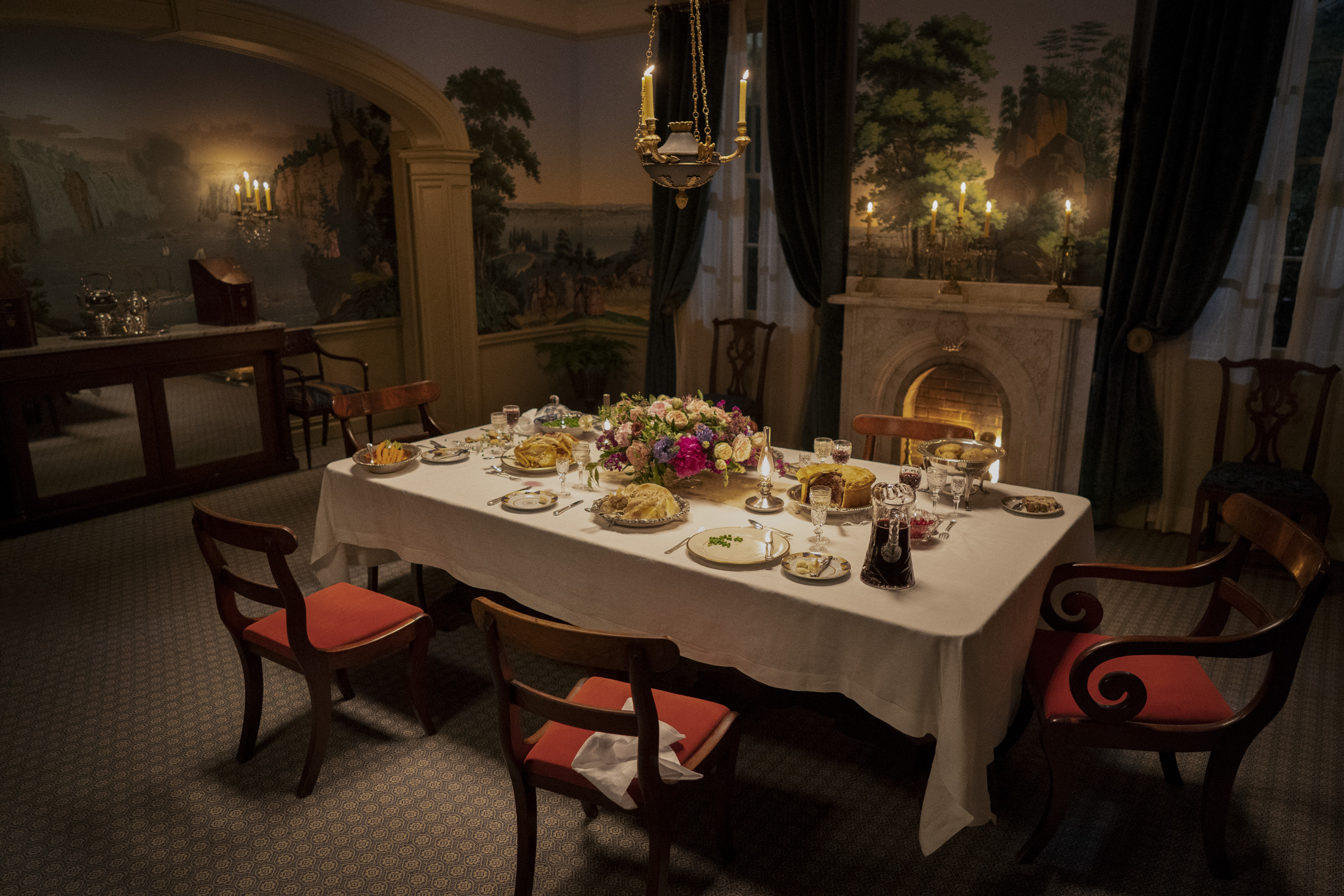
Production design of “Dickinson” by Neil Patel. Courtesy of Apple.
Kirill: If you look back at the time that has passed since you’ve started in this field, do you see many technological changes that have made your job easier? Maybe 3D printing materials, or maybe computer-aided design tools? How much the world of art direction and production design has changed around you?
Neil: I’ve been doing this for quite a while. Between my theater career and my film television career it’s been almost 25 years. I learned to draft and draw by hand, and now I spend most of my time on this computer [laughs]. What I normally would have done with sketching, I now do with 3D modeling and with computer drafting. Some of my research is online, but I’m old enough to have collected a library of art books. I love my books [laughs].
It creeps up on you slowly and you start to accept it. I accept that when I go on a scout, I’m taking pictures on my iPhone or my iPad, and i’m drawing on it. I’m creating documents in the scout bus, and by the time I get up to the office, I have almost a storyboard of what I just scouted. You couldn’t do that before. We were taking notes on notepads and it would take a long time to do storyboards. The thing that I find the most useful is that the technology allows me to communicate to my team and my collaborators so much more easily. Also right now we’re dealing with Covid, communicating over great distance and being separated, not being able to physically be in the same space with people. It’s incredible what you’re able to do.
But I was using these tools even before Covid, and it’s continuing now. 3D printing is a marvelous tool. It lets me build for example a half-inch scale replica of a Chippendale dresser in very little time, and it’s extraordinary how easy it is do it today compared to doing it by hand in the past. Software pre-viz tools are incredible. I can take a director through the set, and make changes on the fly.
Having said that, as much as these tools give you during prep, you can’t ignore the ability to respond to a location in a comfortable, conversational and collaborative way that is not technology based. I hope that does not get lost. When you focus too much on technology, you sometimes lose the life of the thing you’re trying to tell. Some things are accidental, and everybody knows that when they’re making things. As an artist and a collaborator, you always have to be open to things. But the tools nowadays are staggering.
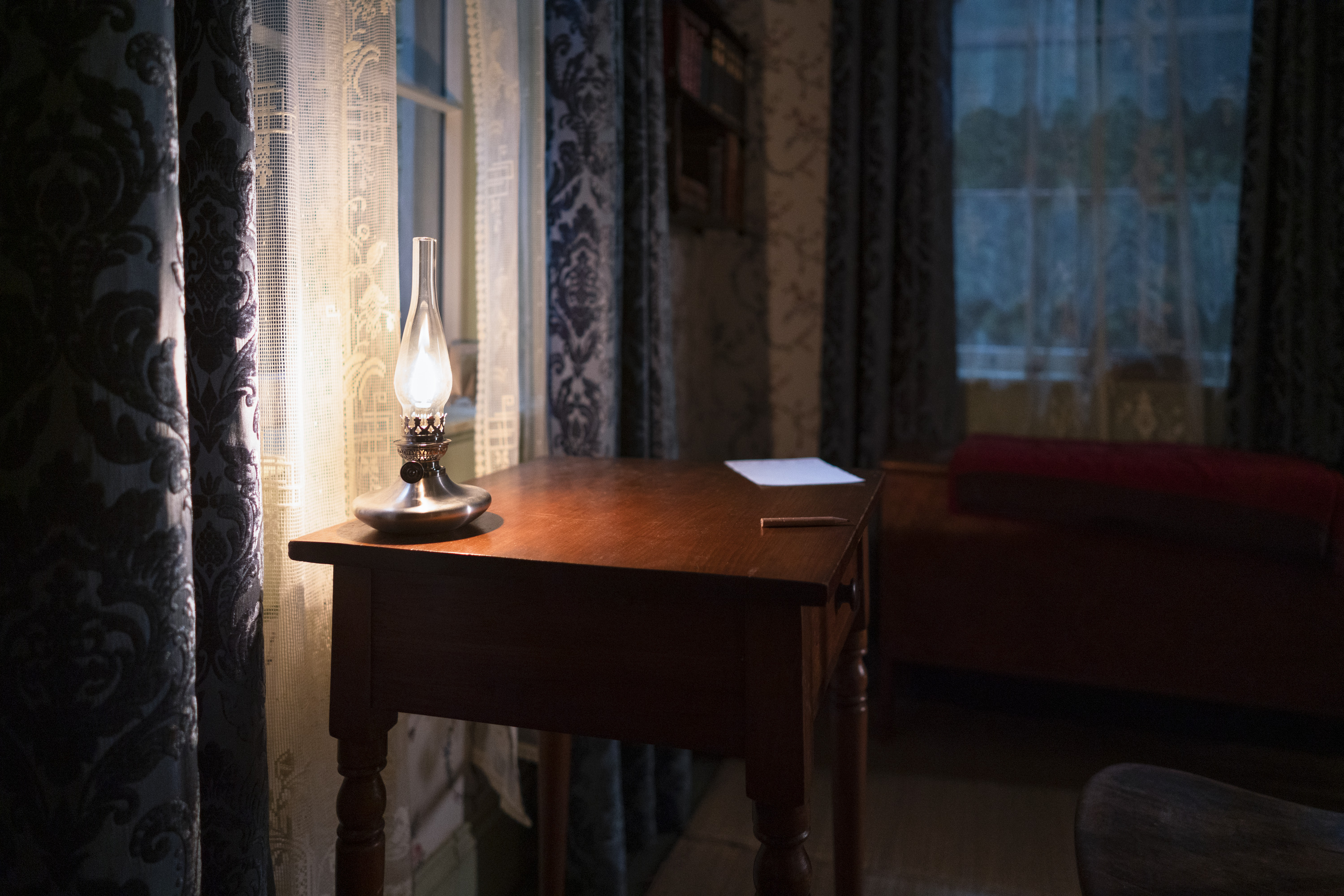
Production design of “Dickinson” by Neil Patel. Courtesy of Apple.
Continue reading »
Continuing the ongoing series of interviews with creative artists working on various aspects of movie and TV productions, it is my pleasure to welcome Oren Soffer. In this interview he talks about the art and craft of cinematography, finding creative solutions within budgetary limitations, keeping track of technological changes in his field, the current production landscape as the Corona-related restrictions are being slowly lifted, and his life-long love of movies. Around these topics and more, Oren dives deep into his work on the just released “A Nightmare Wakes”.
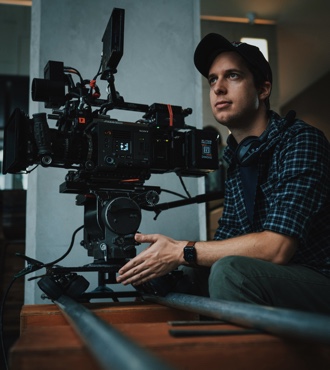 Kirill: Please tell us about yourself and the path that took you to where you are today.
Kirill: Please tell us about yourself and the path that took you to where you are today.
Oren: I grew up on all the classic ’80s and ’90s blockbusters. “Star Wars”, “Indiana Jones”, “Back to the Future”… “Jurassic Park” is the first film I remember seeing in theaters; I was five at the time, and I loved dinosaurs as a kid, so that movie was a big deal for me. I just loved movies since I was a little kid.
As I got a little bit older, I started getting interested in how films were made. Up until a certain age there was a magic to the whole process, and then it started to get demystified when DVDs started coming out with special features and behind the scenes featurettes. At the time they were quite elaborate and detailed, and the big one for me was the “Lord of the Rings” extended edition DVDs, each one with 10 hours of behind the scenes bonus material. They were so detailed, and got into all of the different processes of filmmaking, including cinematography, which I had never really thought about at that time or realized was this separate thing.
As a kid I was also very much into drawing, painting and working in visual arts – starting to get into photography as well. That combination of learning about how films were made, realizing that I wanted to make films and then learning about the role of the cinematographer as the person in charge of crafting and designing the visuals of the film – that was the perfect meeting place of my interests, which were visual art and filmmaking. I was in middle school at the time, and that’s how my interest in cinematography started.
My friends and I started shooting silly little films with home video cameras. We’d be recreating music videos or shooting parodies of movies we loved in our homes and around the neighborhood. It was sort of like that film “Be Kind Rewind” that Michel Gondry directed, where they’re making cheap versions of films.
Skipping ahead, I ended up going to film school at NYU. While there, I focused on cinematography and shot a lot of student films, and I haven’t looked back since. I’ve been a working cinematographer ever since and it’s been great.
Kirill: Did you get to experience the “end tail” of film as the medium?
Oren: Funny enough, we were the last class at NYU that shot on 16mm black-and-white reversal film in our introduction class, as the year after us switched to digital for the first time. We still shot on film and learned on film in the cinematography classes. I got to shoot on 35mm and on Super 16mm.
These days film has made a sort of comeback in the commercial world. There are a lot of commercials and music videos being shot in film now. People are going back to that medium because it has a very specific texture to it that people really like. And obviously a lot of features are still shot on film to this day.
I was quite fortunate to be able to learn on film. We also learned editing on flatbeds. We would shoot 16mm film, get it developed and then physically cut and splice the film like they used to do before computers were around. That was a great way to learn, and I wish more people could learn that way when they study filmmaking, and not just cinematography. It was just such a great way to understand editing and film language, and how to work with limitations. It was a great experience.
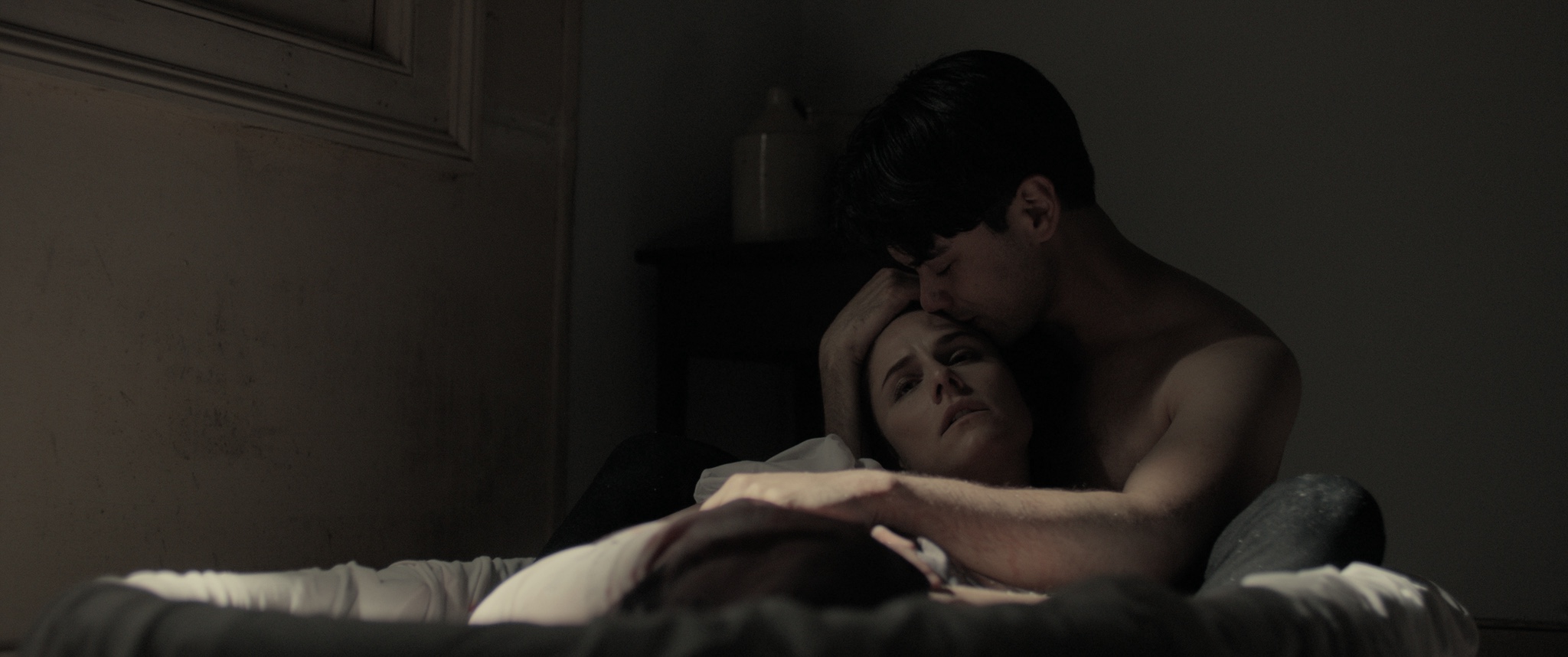
Cinematography of “A Nightmare Wakes” by Oren Soffer, courtesy of Shudder.
Kirill: Cinematographers love to talk about film as the medium, of course. Do you think the viewers at home care as much about it?
Oren: To be honest, most average viewers won’t tell the difference, and that’s something important to keep in mind. Personally, I don’t have a horse in the race in terms of this debate. I don’t think one medium is better than the other.
I personally enjoy shooting on digital. I like having the immediate feedback of being able to see what image you’re composing in real time. With film you have an approximation of it, and then you only really know what you’ve shot when you watch your dailies. I like the immediacy and the responsiveness of digital. It makes me feel like I can be more bold in my lighting and in my cinematography choices. I can go darker and moodier. I can push the image a little bit more.
I think a lot of DPs could use a reminder sometimes that at the end of the day we’re making films for audiences, and what really matters is the storytelling; using film language to tell your story and create a subjective experience with your characters. We get interested in the medium and the technical sides of it. They’re fun for us as cinematographers and as nerds of film and filmmaking, but most audiences don’t notice it [laughs]. I tend to not get bogged down in that.
I like to create an environment that’s simplified and not overly complicated, so that I can focus on film language, shot design, and lighting.
Kirill: If you asked me 20 years ago what the job of a cinematographer is, I’d imagine somebody grabbing a camera, putting it on their shoulder, pointing at the actors and pushing some sort of a button to get it rolling. When people ask you what do you do for a living, how do you convey the actual complexity of it?
Oren: On a basic level, that’s pretty much accurate: a big part of it is deciding where the camera goes. If it’s a low budget project, the cinematographer also ends up operating the camera, and on bigger budget projects or projects with multiple cameras you tend to have other operators come in.
The one aspect that most people aren’t necessarily aware of initially is that the cinematographer also designs, shapes and controls the lighting.
It depends on the circumstance. On “A Nightmare Wakes”, because of our budgetary limitations, the director and I embraced a minimalistic approach from the get-go. From the planning and conception stage we designed this film to lean into limitations, because we knew we didn’t have the budget to pull off any big elaborate things.
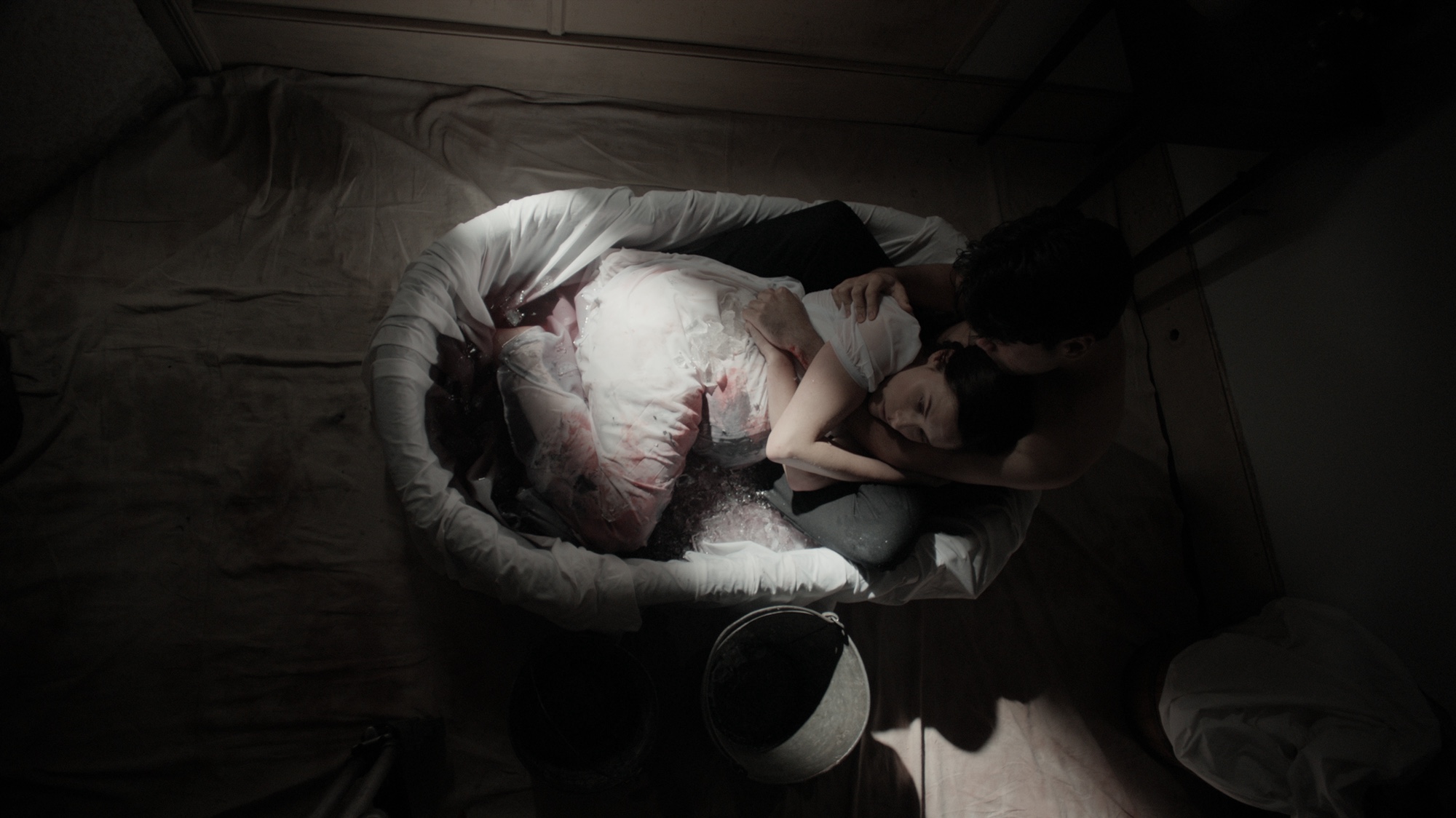
Cinematography of “A Nightmare Wakes” by Oren Soffer, courtesy of Shudder.
Continue reading »
Continuing the ongoing series of interviews with creative artists working on various aspects of movie and TV productions, it is my pleasure to welcome Ollie Downey. His work in the last few years can be seen in productions such as “Electric Dreams”, “Harlots”, “Britannia”, “Temple” and others. In this interview, Ollie talks about the cinematography of the second season of Amazon’s “Hanna” that takes us all across Europe, as well as diving deep into a whole new training facility known as the Meadows.
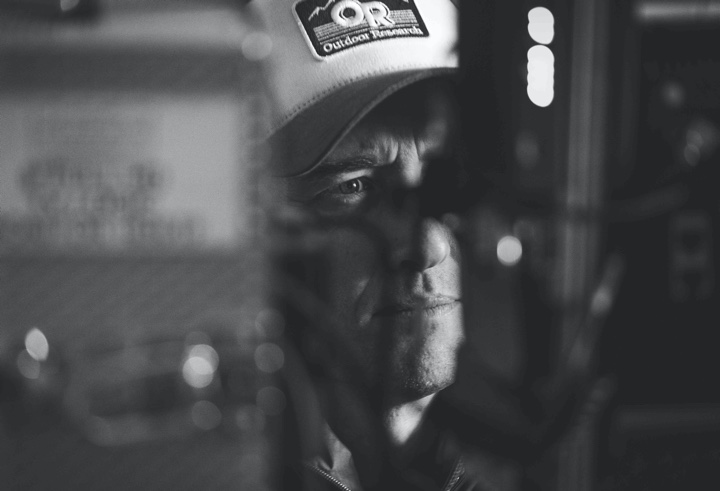
Kirill: Please tell us about yourself and the path that took you to where you are today
Ollie: I always intended to study Fine Art, but had a last minute change of heart. I loved painting but ultimately it was too isolating – I enjoy being around people too much to be standing at an easel all day. I have vivid memories of catching “North by Northwest” on TV when I was very young, and being mesmerised by the imagery. I also spent a big portion of my early teens discovering all those great Coppola and Scorsese films you do at that age. After College a pal got a job as a 3rd AD on a low budget Feature, and they needed a Runner. I really enjoyed it, and just being on set cemented my interest in Camera and Lighting. From there I worked my way up through the Camera Department, always DPing little low budget Shorts and Promos on weekends. After about 10 years the DPing took over from the assisting.
Kirill: When you talk about what you do for a living with somebody who is not in your industry, how difficult is it to convey the complexity of what it is that a cinematographer does?
Ollie: I think most people believe you stand there with a camera on your shoulder all day. I tend to say that I’m responsible for the lighting and framing of the show, working with the Production Designer to set the mood.
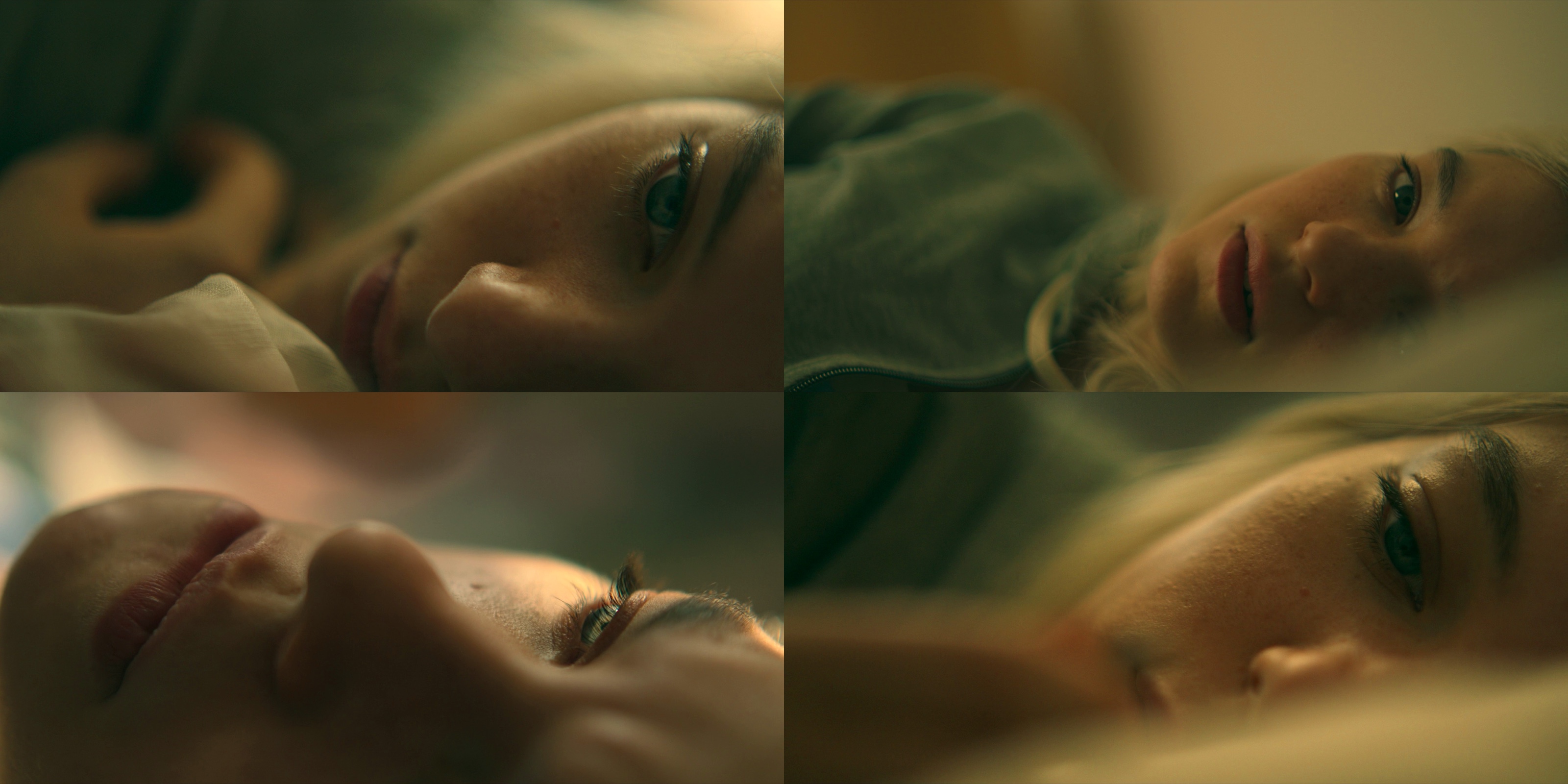
Cinematography of “Hanna” by Ollie Downey.
Kirill: Between finding the right artistic expression to tell the story and the technical side of things (lenses, camera bodies, etc), is one more important than the other for you?
Ollie: It’s absolutely the artistic expression of the script that is the most important to me. I think it’s good to forget about the technical aspect altogether until you’ve got your head around the script. Once you understand the story and characters, your visual references fall into place and the technical approach follows.
Kirill: Looking at some of the work you’ve done in the last few years, it spans different genres and periods – from “Temple” to “Electric Dreams”, from “Hanna” to “Harlots”. Is it your intent to explore different genres?
Ollie: Absolutely. I think it’s really important not to repeat yourself. One of the most satisfying parts of the job is creating the look in Prep. Building a library of references and letting that dictate your camera package, lens choices, framing and lighting style.
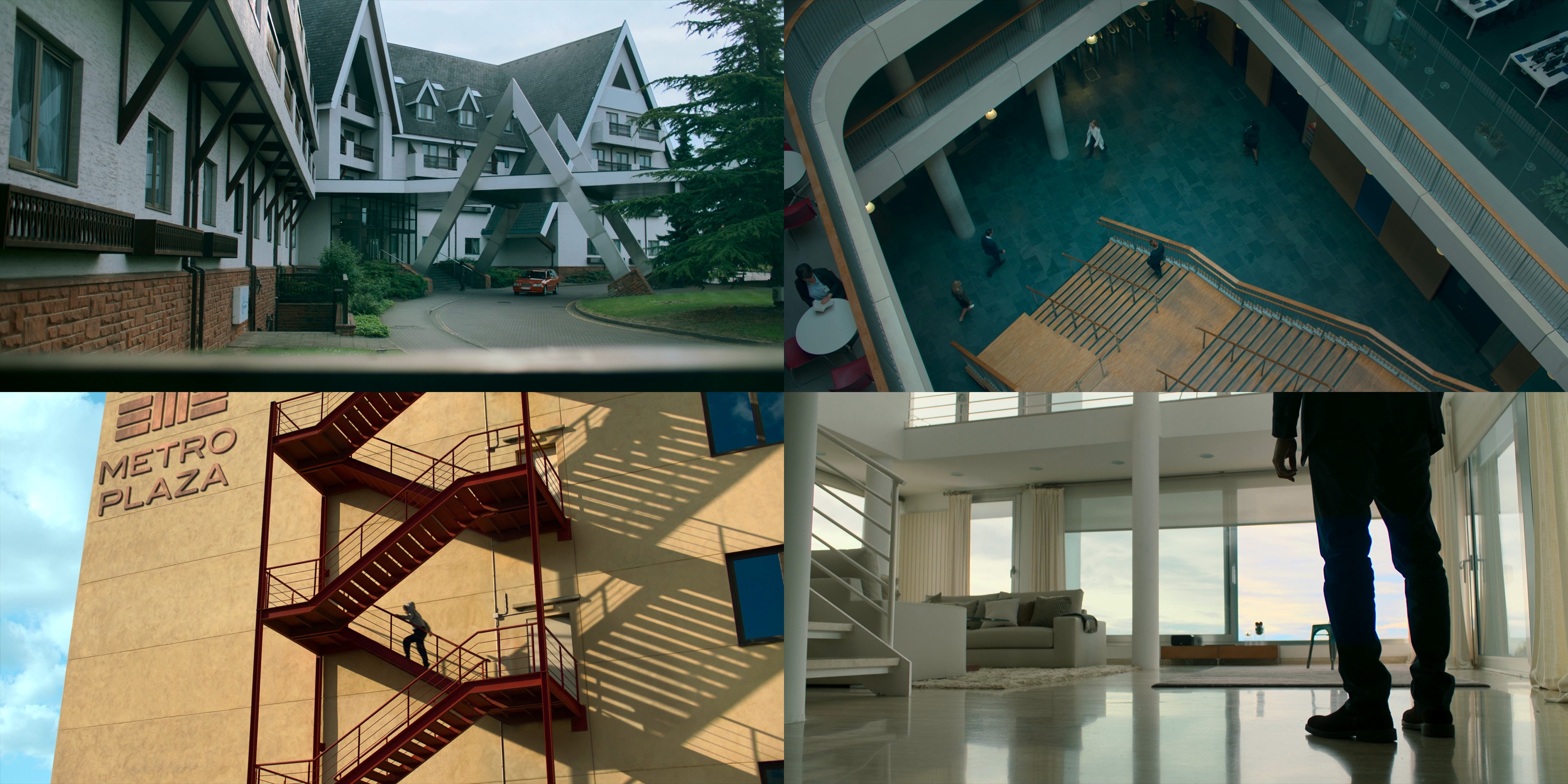
Cinematography of “Hanna” by Ollie Downey.
Continue reading »
Continuing the ongoing series of interviews with creative artists working on various aspects of movie and TV productions, it is my delight to welcome Carey Meyer. In this interview he talks about his approach to designing his productions, the changes in the world of visual storytelling since he started in the field in the early ’90s, embracing accidents, and how much may change on the other end of the current Corona break in the productions. Around these topics and more, Carey looks back at his earlier work on “Firefly” and “Buffy the Vampire Slayer”, and dives deep into creating the lavishly intricate worlds of the first two seasons of “Altered Carbon”.
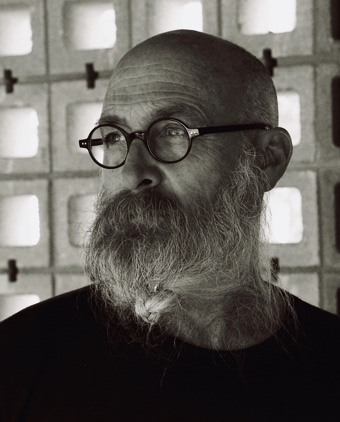 Kirill: Please tell us about yourself and the path that took you to where you are today.
Kirill: Please tell us about yourself and the path that took you to where you are today.
Carey: My name is Carey Meyer and I’m a production designer in the film industry. I’ve done a couple small features, but I mostly do episodic television, and it’s been quite good.
Going back to how it started, I was always an artist. I found myself enjoying design and architecture, and I went to a school of architecture – a program called “design studies” that had a broader reach compared to a bachelor of arts degree. We studied all fields of design – environmental design, graphic design, architecture, product design, etc. We got a broad concept of how design processes could be applied to all those different fields. We were learning a process that wasn’t dedicated to one specific thought within design. I enjoyed breaking it down into those specific fields, focusing on training and understanding them.
In that college we had a film club, where a bunch of friends and I would do theme events for the school of architecture. We would typically base them off of a film like “Brazil” or “Blade Runner”, and that was my first spark in film. I started seeing it as a field that requires a lot of design, not just production design but also cinematography design, direction design – in a way, it’s all a design process.
Obviously, I fell into mostly production design, although I have directed quite a few episodes of television as well. And having been at the helm on a few episodes of television made my design process much more specific and edited. You have a much more nuanced idea of what is important as a designer. You are able to have those conversations with directors, to know and understand that they are going to take a specific nuanced tone with a scene that might be the crux of the entire tone of the whole piece. It might be a feature film, or an episode within a series.
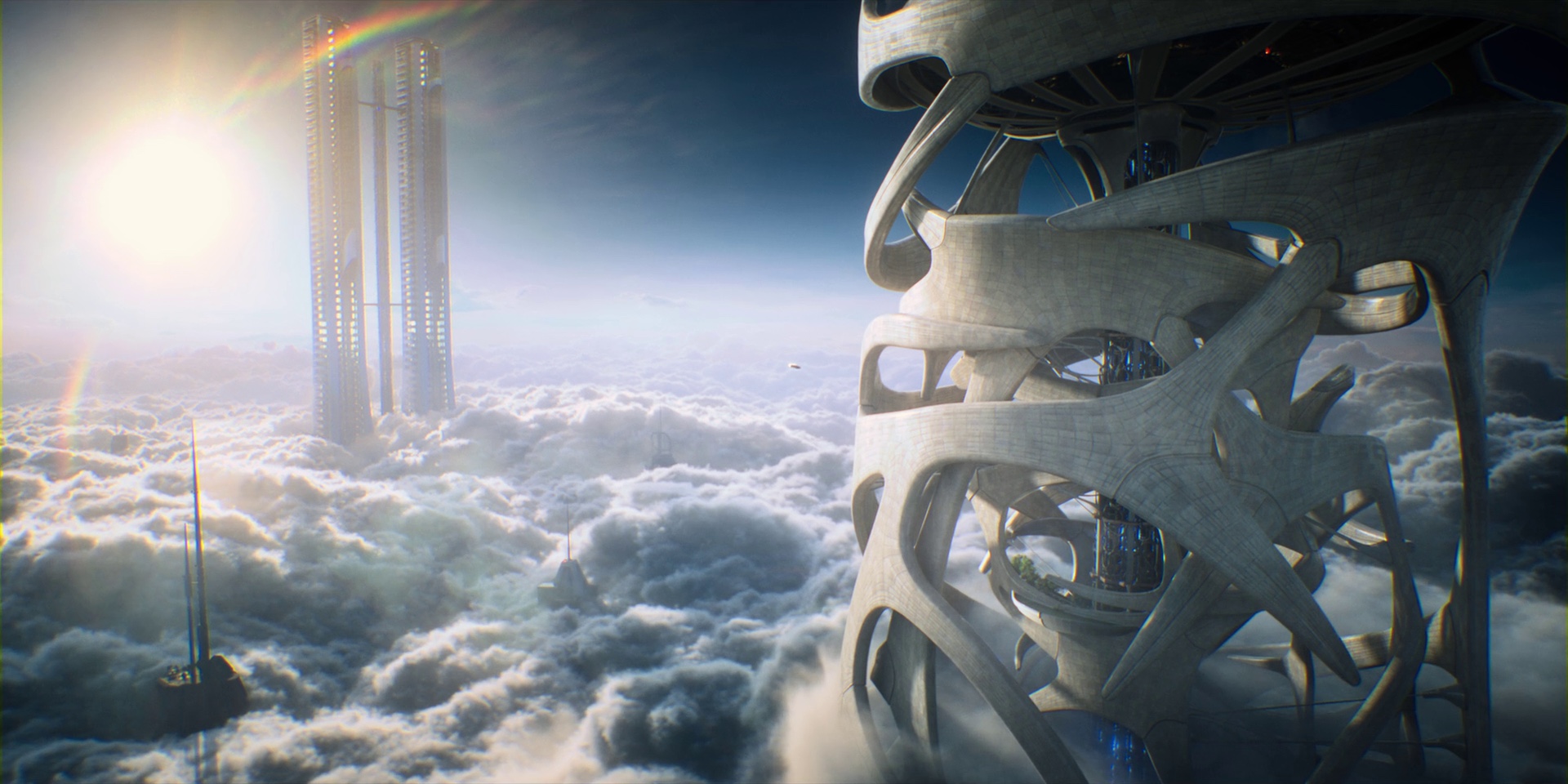
Production design of “Altered Carbon” by Carey Meyer, the view going “up into the clouds” of Aerium in Season 1.
Those conversations are critical in television. You’re trying to create with a multitude of directors and multiple cinematographers. What is the tone of the piece? You’re trying to design and build things in an efficient way. You’re breaking down a script and deciding what’s going to be a location, or how you’re going to design this to match with the location, or if it’s going to be built on stage. There’s a myriad of reasons why you would do things on stage vs on location. A lot of it has to do with schedule, especially in television. You’re trying to marry bits and pieces of the puzzle together, and so you might edit the script a little bit to get those pieces to fall within a schedule in a construct that makes sense for the production.
As a production designer, that’s one of my main focuses – to start having those conversations. I’m talking with the director and the showrunner, who’s really the main steering partner, and we discuss that specific tone that holds for the rest of the series. Then it evolves and morphs into other things, and that is a lot of fun. The tone of the piece that emerges from those conversations ends up affecting what you build and what you design.
Kirill: When you talk with people outside of your field, is it easy or hard to explain what you do for a living?
Carey: It’s hard to give them the nuance. That’s what this position is – it is nuanced. I’m not just trying to design a pretty room. I’m trying to have the conversation about what room do we really need. What does that mean to you? How does it fit together with all the other pieces? You can’t just go ahead and start designing a room.
We have the conversations about color and lens choices. How dark is it going to be? What pieces do we really need to have in there? What is our critical wide shot, and what’s the focus on that scene? Can we build a wide shot that is meaningful so that we can then go in and create a lot of cinema within? Maybe we don’t necessarily need the whole ballroom. Those are conversations that I get excited about. When you start having that conversation, you are immediately cutting out half the work, because now you’re not having to necessarily create the whole thing.
Of course you do have the bigger environments, especially on TV series, that will play for the entire show. Those are well thought out and fully realized. But you also have the bridges between those scenes, and those structures can have more plasticity to them. You don’t need to fully structure those bridges. That all comes down to the cinematography, the edit, and the tone that the director is going to take with those scenes. You build the trust with your director that they are going to follow through on the idea they have in their head, be it a storyboard or not. And of course, you find great stuff on the day too.
I hate the old adage of the smoke and mirrors, but using those gags and gimmicks to create fantastic images does have a big part to play in the process.
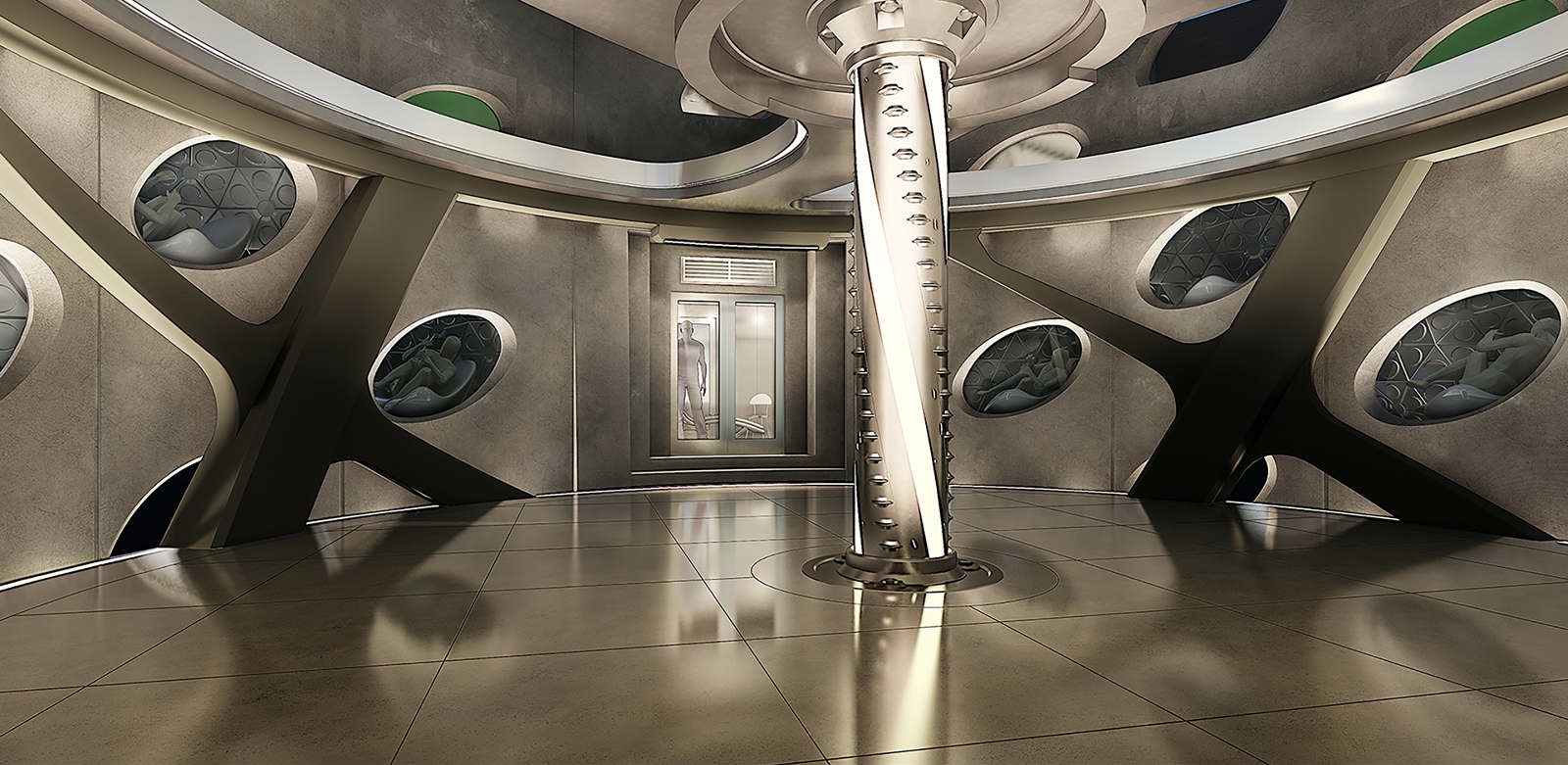
Illustration of the Psychasec Lab for Season 1 of “Altered Carbon”, courtesy of Carey Meyer.
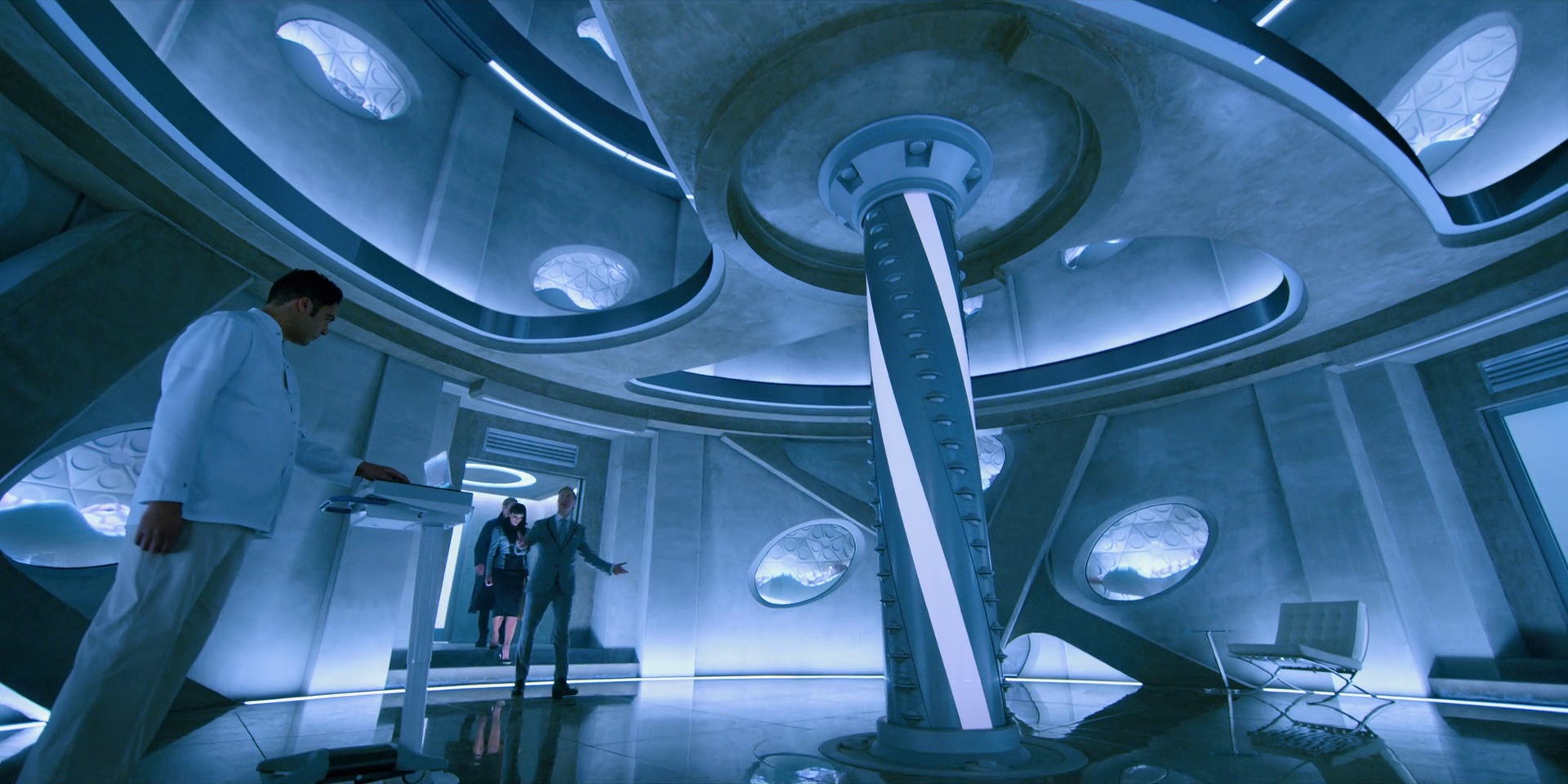
Production design of “Altered Carbon” by Carey Meyer, Psychasec Lab in Season 1.
Kirill: Do you find that much has changed since you started working in the early ’90s? If I had a time machine, and I brought you from 1990 straight to 2020 (ignoring Corona of course), would the young you feel at home in 2020, or would you say that things have changed significantly?
Carey: I’d definitely feel at home, and that rings especially true in television, because you cannot afford all the CG that might happen on a big feature film. And even on a big feature it has to be conceived, and everybody has to understand what those pieces are, down to costume and props. Everybody has to understand what that environment is, and at some point there’s going to be something that’s built, and it can’t just be random.
So the creation of all that imagery is really what’s important. Another important thing is that everybody understands what it is. From a production designer’s standpoint, you might leave on the table huge swaths of a script that are going to end up in a CG environment, but you still want to have a good understanding of what those environments are, so you can build and relate your built world to it and vice versa.
“Altered Carbon” was a terribly ambitious world that we were trying to create, and the size of the budget was absolutely the largest I’d worked with. I knew at that time that it was going to be the most intense design process, figuring out all those CG elements, and figuring out what that world needs to look like. That needs to happen so that you can communicate that to the entire CG department, so they would all get on the same aesthetic and start integrating that world that was beyond the shot lens, and incorporated into what we did shoot on camera. But you still have to build as much environment as you can, so CG can get even further and bigger for the storytelling.
If they end up creating all the background in most shots, then that’s where your money’s being spent. The first season was 10 episodes, and we created a large part of that world. We built a 300-foot long street to shoot on. We had the ability to make it feel like it was a different place in different scenes. We were more successful with certain versions of it, maybe less with others, but it was all one world. And we were able to control it and push the envelope on how it can look.
If you were trying to do a lot of that work on location, you’d end up with CG removing all kinds of signage, and adding bits and pieces to try to make it look not contemporary. And we didn’t want to waste our money doing that. We’re talking about a TV schedule. We were on a series schedule, still shooting on location all the time. It gets problematic, complicated, and expensive. We did a good portion of on-location exterior shooting to help extend that world, but we needed to have a real base station of the world that we knew we could always fall into.
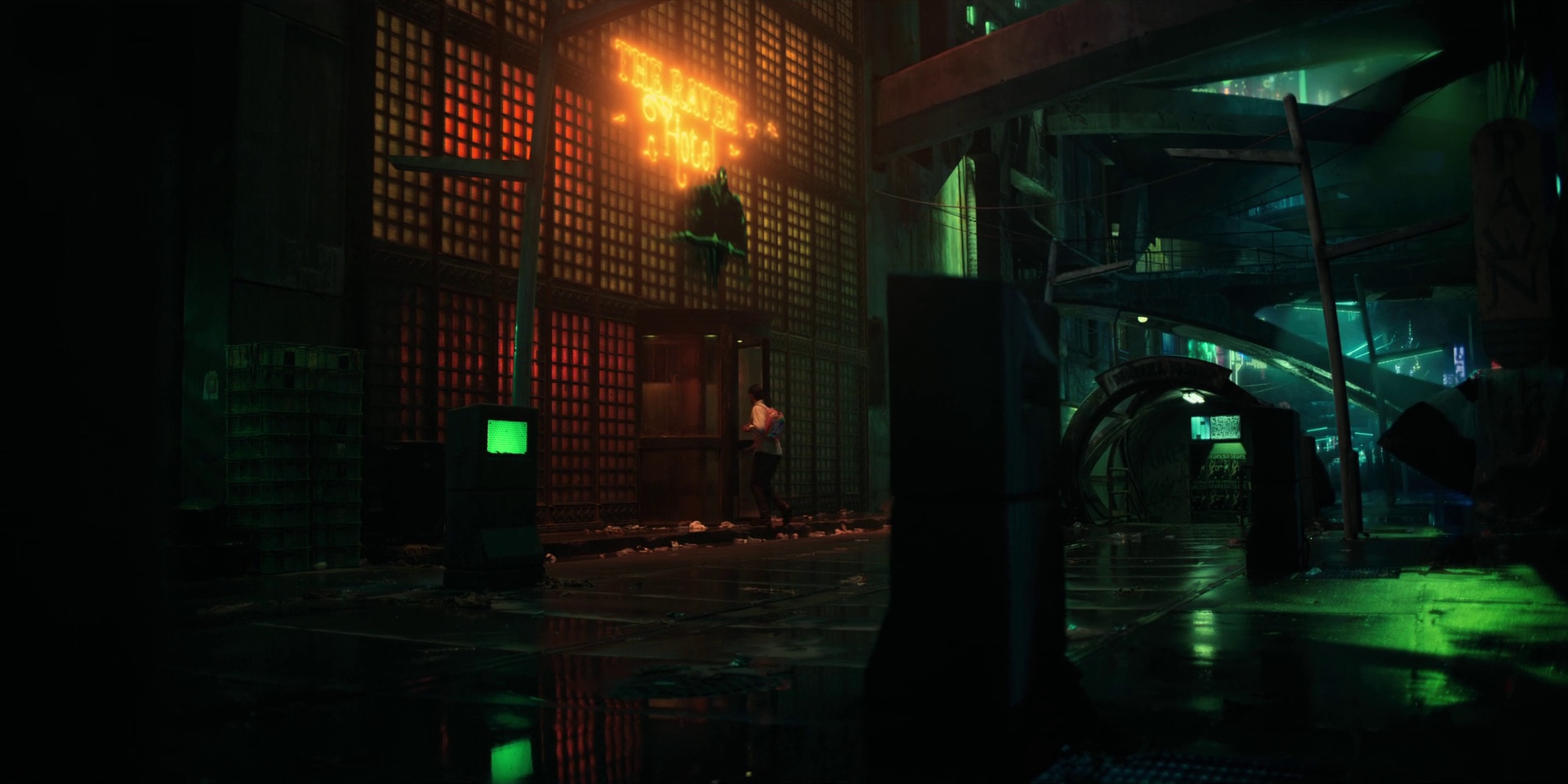
Production design of “Altered Carbon” by Carey Meyer, exterior of the Raven Hotel in Season 1.
Continue reading »
![]() Kirill: Please tell us about yourself and the path that took you to where you are today.
Kirill: Please tell us about yourself and the path that took you to where you are today.![]()
![]()